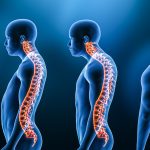
Energy Imbalance. Amenorrhea. Osteoporosis and risk of fractures. Together, these symptoms make up a condition called the female athlete triad.
Typically, this condition is seen in young female athletes. While personal trainers are not qualified or trained to diagnose such a condition, they do have a responsibility to know and understand the symptoms so that they can refer clients who are at risk to the appropriate group of professionals.

Female Triad Symptoms and Personal Trainer Actions
Energy Imbalance. Generally, this symptom is characterized by severe dietary restriction and caloric intake and/or a fear of weight gain. One of the secrets to optimal performance is energy intake and nutritional practices.
However, there is great pressure for athletes to weigh a certain amount or possess a low percentage of body fat. This pressure can lead to both eating disorders and disordered eating.
What a trainer can do: If you suspect a client you are working with is engaging in this type of dietary restriction, monitor their intake via food logs and qualitative investigation. Trainers may also notice severe and intentional weight loss. This is also something to monitor.
Amenorrhea. This symptom refers to irregular or the disappearance of the menstrual cycle. Young female athletes will see a loss of estradiol, a key component of estrogen. The loss of a menstrual cycle increases the risk of fractures and an osteoporotic state.
A low percentage of body fat and severely reduced caloric intake coupled with extreme levels of exercise create a ripe condition for amenorrhea.
What the trainer can do: Discussing menstrual cycles with female clients can be awkward and uncomfortable. You don’t have to directly ask your clients “when was your last period” to monitor this condition. Instead, consider discussing the signs and symptoms of amenorrhea and the female athlete triad in general to arm clients with knowledge.
Risk of Broken Bones. Because of reduced caloric intake, low percentage of body fat, reduced body weight (as body weight influences bone density), and disrupted hormonal profiles, broken bones are common in young female athletes. In fact, this may be the first signal to a physician or trainer that their patient or client has an issue.
What the trainer can do: Establish a relationship with the client’s primary care provider and discuss any fractures or concerns of osteoporosis. A bone density/DEXA exam may be warranted but that is the doctor’s call.
As with any aspect of health, personal trainers have a responsibility and an obligation to educate their clients and equip them with accurate and valuable information that allows them to make informed decisions as consumers. Educate while remaining within your scope of practice and you could help your female clients avoid or treat this trifecta.







